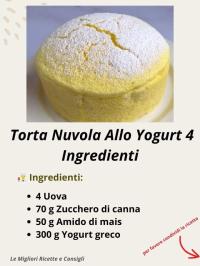Copy Link
Add to Bookmark
Report
Mead Lovers Digest #1031

From: mead-request@talisman.com
Errors-To: mead-errors@talisman.com
Reply-To: mead@talisman.com
To: mead-list@talisman.com
Subject: Mead Lover's Digest #1031, 2 August 2003
Mead Lover's Digest #1031 2 August 2003
Forum for Discussion of Mead Making and Consuming
Dick Dunn, Digest Janitor
Contents:
Re:Camden tabs and temperature ("Lane Gray, Czar Castic")
Re: Mead Lover's Digest #1030, 28 July 2003 (Dennis Key)
Sanitizing, Campden Tablets, Racking (Mike Peremsky)
Dr. Jim.... Camden tablets and temperature ("King, Derek")
Dan's history Comments (Ken Schramm)
Characteristics of different sugars? (Greg McBee)
NOTE: Digest appears when there is enough material to send one.
Send ONLY articles for the digest to mead@talisman.com.
Use mead-request@talisman.com for [un]subscribe/admin requests.
Digest archives and FAQ are available at www.talisman.com/mead. There is
a searchable MLD archive at hubris.engin.umich.edu/Beer/Threads/Mead
----------------------------------------------------------------------
Subject: Re:Camden tabs and temperature
From: "Lane Gray, Czar Castic" <CGray2@kc.rr.com>
Date: Mon, 28 Jul 2003 12:13:26 -0700
> From: Lofty@aol.com
> Date: Wed, 23 Jul 2003 09:47:19 EDT
>
> Here is a question about Camden tablets and temperature .
>
> The honey and water are heated on the stove and the surface is skimmed.
> 1. at what temperature is this mixture brought?
> 2. how long is it maintained at this temperature ?
> 3. It's then cooled. At what temperature do we add camden tablets?
>
> Dr. Jim- Philly
Most people choose either heat OR campden tabs. I've gone to strictly heat,
or lately, I've even nearly eliminated that, just relying on good
sanitation, and thus far have had no infections.
I had thought about sulfiting regularly, but then discovered that it gives
me a nasty case of tinnitus.
If you're going to heat, I'd answer question 1 with 180 degrees F (which I
think should probably be around 88-90C, no?) and question 2 with about 10
minutes.
If you're going to answer question 3 as a positive, then questions 1 and 2
are redundant, and some would say counterproductive, as heating changes the
taste of the must.
Then Dan McFeeley writes:
>Third world cultures need considerable attention. You can catch a glimpse
> of what the most ancient forms of honey brews may have been like by
> looking at examples such as Ethiopian Tej. This may surprise everyone,
> but what we think of as "mead," i.e., a fermented drink made from
> honey, was not the first fermented beverage. The oldest archaeological
> artifacts showing the use of honey in the making of fermented beverages
> were mixtures of herbs, cereals, and honey. What we would call a
traditional
> mead seems to have emerged some time later. I think you can say with
> reasonable accuracy that honey was first used in the beginnings of the
> making of alcoholic beverages, but mead itself was not the first.
Thanks for clearing that up, Dan. I'd always sorta questioned the theory
that mead came first before beers or wines, just because it seems that wine
would be nearly spontaneous, as the juice should be ready to ferment, with
yeast colonizing the grape skins. With mead, you have to dilute the honey
down with water a good bit first. Seems logical honey would be the first
deliberately added yeast food, as sugar takes a bit of historical
development to come up with, and the bees are busy doing their thing from
the beginning. Or am I WAY off base here?
Lane
------------------------------
Subject: Re: Mead Lover's Digest #1030, 28 July 2003
From: Dennis Key <dione@swcp.com>
Date: Mon, 28 Jul 2003 11:27:13 -0600
Ariel, How many habaneros in how big a batch? I tried a hot green chile
mead and it had so many rough edges, it's barely drinkable after five
years!
Dennis
------------------------------
Subject: Sanitizing, Campden Tablets, Racking
From: Mike Peremsky <mperemsky@yahoo.com>
Date: Mon, 28 Jul 2003 12:21:30 -0700 (PDT)
I am new to the brewing game and I have a couple of
questions. I have been reading some articles and am a
little confused about a couple of things.
First,
when sanitizing equipment I often see comments to
rinse off the bottles/equipment after it has been
soaking. Doesn't this defeat the purpose of
sterilizing it to begin with? Aren't you just
re-adding foreign organisms by rinsing it off with
water again? Or is the idea to sanitizing the
equipment to kill off the majority of the beasties
that may have gathered while the equipment was sitting
around and the rinsing part will impart no major
infection?
Second,
I was always told to add campden tablets to my mead
after it has cooled down (after pouring the must into
the primary). But I have also read that this is not
necessary if you have boiled or pasteurized (my
preference) the must. Is this in fact true? Do I only
need campden tablets before bottling? Do I need to add
each time I rack?
Finally,
During the racking process the level of the mead in
the carboy drops. What is the best way to take care of
this extra space. Recently I have read that dissolving
honey in water and topping it off is the way to do it.
Another was to add marbles to the carboy to raise the
level.
Mike P. (mperemsky@yahoo.com)
------------------------------
Subject: Dr. Jim.... Camden tablets and temperature
From: "King, Derek" <DKING@tsionline.com>
Date: Mon, 28 Jul 2003 21:54:35 -0400
>>The honey and water are heated on the stove and the surface is skimmed.
>>1. at what temperature is this mixture brought?
>>2. how long is it maintained at this temperature ?
>>3. It's then cooled. At what temperature do we add camden tablets?
>>Dr. Jim- Philly
The easiest way I found to do this is to boil the water for at least 10
minutes, then let the water cool for at least five minutes. At this time add
your Camden Tablets and make sure they dissolve before you add your honey.
Then cover the must and let it cool to room temperature, before you add it
to your primary fermentation bucket. Then add everything else.
As for temperatures, I've never worried too much about the specifics with
the brewing of the must. Not to say you shouldn't, but I've yet to turn out
a bad batch of mead with this method.
But if you are looking for specifics check out, Making Mead, by Roger Morse.
Derek King
------------------------------
Subject: Dan's history Comments
From: Ken Schramm <schramk@mail.resa.net>
Date: Tue, 29 Jul 2003 21:51:12 -0400
I have to agree with those prodding you to write a book on mead, Dan,
but I've said that to you before. I'd sure buy one.
I would like to reflect a bit on one comment you made...
>What we would call a traditional mead seems to have emerged some time
later. I think you can say with reasonable accuracy that honey was first
used in the beginnings of the
making of alcoholic beverages, but mead itself was not the first.<
"first used" or "used first"?
Until we can get a bit more archaeochemistry done, I think your point
may be tough to prove or disprove. When discussing pre-historic
fermented beverages, the term "mead" as a term for any beverage in which
the primary fermentable was honey may be appropriate. It may be
somewhat inaccurate; in fact, it may have been tej, which is made in
Ethiopia, the very cradle of man, or it may have been another
honey-based beverage fermented by a now extinct branch of the human
tree. Mead as _we_ know it might not have been first, but I am still
willing to suggest that some form of mead in some larger sense was
first. Maybe I'm just babbling about semantics.
I am curious to know what archaeological techniques might be employed to
get to the bottom of the question. If the "Magic Bag Theory" has any
merit to it, there will surely, in the future, be more accurate methods
of determining the effects of the lifestyles of neolithic and
paleolithic humans on their surroundings. As it has with bowls and
vessels, chemical assay of soils and other relics will reveal massive
amounts about diet and behavior. Evidence of early fermentations and
their constituents (be they mead or beer or wine or cider) may come from
that. I think in the long run that we will realize that for more than
a hundred years of archaeological practice, sifting and discarding soils
in search of bones and tools from pre-historic sights may have been
throwing out the baby with the bath water.
------------------------------
Subject: Characteristics of different sugars?
From: Greg McBee <gmcbee@yahoo.com>
Date: Thu, 31 Jul 2003 07:32:52 -0700 (PDT)
Hi all,
Can anyone point me towards any information about
the byproducts (other than ethanol and CO2) of
the result of fermentation of various types of
sugars, i.e. fructose, maltose, dextrose, lactose,
glucose, etc.?
I'm interested in trace chemicals that may have
an effect on flavor, as in the effect of using
white sugar in beer that can produce a "cardboard"
taste. What chemical does this?
Thanks in advance!
- --
Greg
------------------------------
End of Mead Lover's Digest #1031
*******************************





















